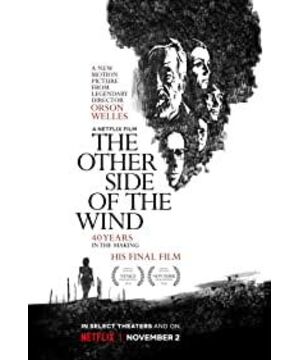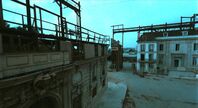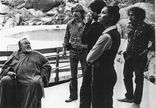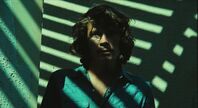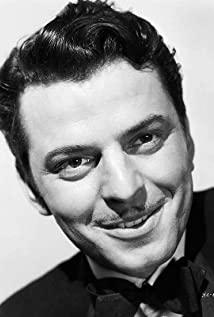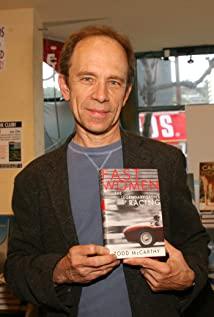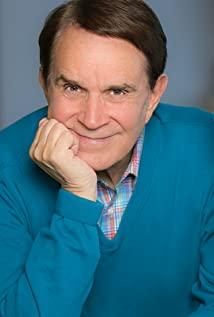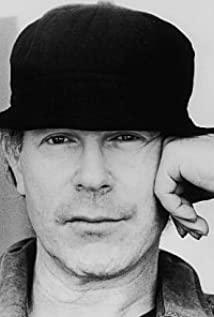This article was first published on the public account "Adventure Movie"
Fortunate or unfortunate, coincidence or premeditated, Orson Welles' posthumous work "The Other Side of the Wind" is destined to be the last work of the giant, which has been out of sight for more than 40 years. Day's film, which miraculously released widely on Netflix last week and in a handful of North American theaters in digital and 35mm formats. Filmed more than 40 years ago in the 1970s, during the heyday of the New Hollywood movement, the film tells the story of an old director who had been exiled in Europe for many years and returned to Hollywood to shoot his comeback. "The story of the 70th birthday party. Whether it is the bizarre and exaggerated creation process of the film, and its introspective plot and images, it is no exaggeration to say that we have witnessed the history of film. As the film's first audience, director Ryan Johnson ("Star Wars 8") tweeted a few days ago: "The first viewing of this movie is a completely hallucinogenic experience; the second viewing is like an eye. After adjusting to the dark; and by the third time, the film completely took over a part of my brain memory, which only a few masterpieces can do." This is not an alarmist, because it does have a strange power. , just like almost all of Wells' previous films: "Citizen Kane", "Miss Shanghai", "Beautiful Woman", "The Trial", "Midnight Clock", "The Fake", etc... All vague and I don't understand, it will finally be revealed after constant repeated viewing.
When it comes to Orson Welles, "Citizen Kane" is always the hurdle that cannot be bypassed. Even Wells himself regards it as a curse-like existence, while "The Other Side of the Wind" is to some extent. It is also his response to this debut. "Kane" can be said to be Wells' own prophecy, in which he will become famous for his genius, but soon fall into an incomprehensible loneliness and predicament, enduring various Betrayal and flight, and finally sullen in the nostalgia of "Rosebud". Regrettably, this all happened to Welles himself: Citizen Kane became the so-called best movie of all time, but Welles was betrayed by Hollywood and went to Europe in his later creations. To raise money for a movie, he had to star in a commercial with a grumpy temper... And in this posthumous work that he himself failed to complete, he used the camera to re-examine these prophecies. In the opening, the elderly John Bogdanovich, one of Welles's friends and one of the film's leading actors, recites the opening remarks that Orson had not been able to record (he also added a rather succinct passage after the original opening). Embarrassing footnote): "This is the car..." We realize that The Other Side of the Wind begins with death, just as Kane begins with Kane's last words. A circle begins to form here, and John Huston plays the elderly director Jack Hannaford, also Wells himself.
Fortunately, no matter how turbulent Wells' career or the production of this film has been, his genius as a film director has never been discarded, and "The Other Side of the Wind" continues to prove that. This is a collection of two films: the main body of the film is a pseudo-documentary-style party scene, mostly shot by 16mm or 8mm cameras, some in color, some in black and white (presumably black and white according to Wells' original rough cut version) part of it was reworked by today’s post-production team), presented in a 1.37:1 ratio; nested in it is the film of the same name filmed by director Hannaford in the film, “The Other Side of the Wind”, shot on 35mm film, with 1.85:1 ratio rendering. Both of these are very different from all of Wells' previous creations, and even the "Fake", which also used high-speed editing at the same time, is completely different from the core of this work. The former's discussion of truth and falsehood is reflected in the magic of editing. Wells also displayed the editing table in front of the camera as the "God" in the film; in "Wind", it was the camera's turn to play an important role in the film. . When we compare Wells' most representative "Kane" with this film, we find that even if we are faced with a similar third-person surround narrative system, the former's rigorous deep-focus photography and narrative logic, and the The latter's gritty, chaotic hand-held images and free-jazz-like narration are two sides of the same giant. As a "prophecy", "Kane" carefully analyzes the fall of a genius from multiple perspectives; "The Wind" is in a sense a "reality" after the prophecy comes true, with an attitude that no longer takes care of everything Wanton critique and abuse of the hopeless environment: from throwing film terminology everywhere, alluding to highly patriarchal and homophobic circles, to satirizing film critics' unreasonable gossip, race and religion and "author theory", inviting old and new Author-director guest, parodies of the New Wave and New Hollywood movement (Bogdanovich as a representative)... Wells stares at the film industry that has abandoned him through the eye of the film, creating a dazzling film Altar Ukiyo-e.
Hannaford isn't a Kane-style superstar, though. In "Kane", no matter how Kane's status is destroyed in the film, until his final fate, from the way he appears (Wells always likes to design cool appearance ceremonies for his characters), the first In the one-act newsreel, the design of "Xiandu", and the character's circular investigation around his origins, Wells has ensured that Kane remains the absolute and irreplaceable core of the film. And in The Wind, Hannaford seems to be hardly defined as a dominant figure, and even in the first 20 minutes or so of the feature film (which begins after the opening credits), we rarely see him in frontal close-ups, instead In contrast, the opening newsreel of Kane solemnly shows Kane's "grand and strange funeral scene".
At the same time, in the two films, we almost all get to know the protagonist through other characters, and "Wind" shows this directly in the form of a "pseudo-documentary", but no one character, including all of biographers, directors, students, etc., were unable to successfully define anything, and they all ended up babbling on to themselves about the "difference between a camera car and a zoom lens." Amid so much noise, even at his own party, Hannaford (and his unfinished film) are relegated to the pathetic fringe role of young directors Bogdanovich, Susan The vicious film critic played by Stassberg, the numerous and mixed people and cameras, and the mysteriously missing male lead constantly send out interference signals in the audience's sight. Even that real "The Other Side of the Wind," Hannaford's in-film, barely plays smoothly.
"The Other Side of the Wind" in the movie is a dazzling "stream-of-consciousness" movie. As a parody of the popular Antonioni-style European movies at the time, the content of the entire movie is basically the male protagonist in various bizarre situations. In the scene of chasing the Indian woman played by Oya Kodak (Wales's partner and partner in his middle and later years, who is also one of the screenwriters of the film). Oddly enough, just as Welles' "The Other Side of the Wind" ended up being a posthumous film, Hannaford's film was a posthumous work, as if it was meant to be (except this one, where Well There are also at least six or seven unfinished films such as "Deep Sea", "Don Quixote" and "The Merchant of Venice"), and the viewing experience of the film in the film is not completely pleasant. The whole film is divided into six times to show the fragments of this unfinished work, but each time is interrupted by various reasons without exception. The "two" films exist and destroy each other.
The first screening for film executives at a studio was almost disastrous, and we were unable to experience its splendid spectacle, but were constantly interspersed with "screen and audience" back and forth, and the chaos of several people heading to the party on the itinerary. This scene, edited by Welles himself, was shown to all the Hollywood people present at the 1975 AFI ceremony to present him with the Lifetime Achievement Award - a tragic review of "The Great Amberson" and "Gone With the Wind" Revenge of the studio recut. The second broadcast is at the beginning of the party, and we witness an Italian pornographic erotic scene that is barely interrupted for about 10 minutes, but ends abruptly with an inexplicable power outage. The third screening was quickly diverted when the boarding school teacher of the film's hero, John Dyer, broke into the screening room. And the film itself seems to have "mutated" along with the audience's attitude, breaking the fourth wall: unfilmed shots and scenes are brutally replaced by large lines, and then we hear Hannaford Shout out to the actors myself until the lead man flees the set in humiliation, the illusion of the movie is shattered and we see props, shooting lights and faux sets sprinkled on the camera... At the end of the drive-in theater At a screening, the screenwriter "Baron" found that the tape was misplaced, in exchange for a cold sentence from the projectionist: "Is there a difference?" In an earlier screening, Hannaford left after a large line of "missing scenes" appeared to the screening room, leaving his own work.
When the in-film plays, it's often natural to cut into close-ups of Hannaford himself watching the film, with Bogdanovich appearing farther back. There is a very amazing toilet scene in the film, we see Kodak's character enter the toilet full of energy, looking at the lewd scene around, big close-up of his eyes looking left and right, and in the movement of the camera, the other characters also Staring at her (Wells sneered at an eye-shaped ring). And just as the characters look at each other, we cut into Hannaford himself. Interestingly, Bogdanovich, who was in the back, looked rhythmically in the direction of the old director, as if the two were also part of the party. Although this is only a few seconds of the whole film, the interaction of images across time and space is amazing. Yes, this is a film that is directly about the camera, the film, and the audience itself. If the usual pros and cons scheduling is about the communication between opposing characters, "Wind" is a scene between the camera and the film, and The "positive and negative fight" between the film and the audience. In the final half hour of the film, a disgruntled Hannaford aimed a shotgun at John Dyer's dummy, severing the umbilical cord between the director and the production. There is no complete film, only fragmented images.
While Welles claimed that the film in the film wasn't the movie he wanted to make, but that he designed the style for Hannaford's character, he couldn't avoid the fact that Hannaford was himself. The meaningless pursuit of the naked male and female protagonists in the film, the temptation of staring in a toilet, the desire to be swallowed up in the gorgeous colors, for Wells, is it as simple as spoofing Antonioni? After Kane, he spent the rest of his life chasing movies, free good movies, and he was a true indie talent. "The Other Side of the Wind" is a truly liberating film, even if it is full of rage, it is like jazz (Michel Legrand, one of the icons of the French New Wave, wrote the music for the film very well, and the film also using the repertoire of master jazz players such as Buddy Rich and Jaki Byard) is full of charming passion, but the price behind it is that it has been in the world for forty years, and in the end, whether it is intentional or not, the film itself is transformed from a satirical film For the Falstaff-esque tragedy in Midnight.
In the most famous scene of "Miss Shanghai", Wells' character is blurred to face mirrors in all directions, forming an infinite copy, unable to tell the direction; while in "The Wind", the young fan asks: "Does the film eye reflect reality, or does reality reflect the film eye, or is the camera just a phallus?" Hannaford did not answer this question directly, but at the end of the film, and the end of this posthumous work, Amid the howling winds destroying everything, a surreal phallus stands in front of Oya Kodak, the actress stabs it with scissors, and it falls. Then in a magic shot, we're pushed from the in-film to an empty drive-in theater, and the screen goes to nothing. Then came Hannaford, and Welles' last words for the film, 40 years late: "Maybe you really stare too hard at something? Squeeze its virtues, suck its vitality, and you shoot those beauties, And the good ones, all the girls and boys, shot them dead." He was his own most tragic prophet, and every film he made was a mirror of him, and Hannaford was Submerged in his unfinished masterpieces and chaotic documentary portraits, his heart and circumstances are not his, which is also doomed to his ending-another "Citizen Kane"-style death narrative, leaving a blank screen, The "rosebud" that no longer exists.
View more about The Other Side of the Wind reviews


